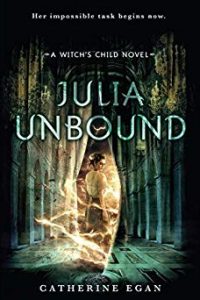Paul Di Filippo Reviews The Fantastic Fiction of Hannes Bok by Hannes Bok
 The Fantastic Fiction of Hannes Bok, Hannes Bok (American Fantasy Press 978-0990784678, $45, 448pp, hardcover) March 2020.
The Fantastic Fiction of Hannes Bok, Hannes Bok (American Fantasy Press 978-0990784678, $45, 448pp, hardcover) March 2020.
As a kid, I used to confuse the artwork of Hannes Bok and Boris Artzybasheff. There’s a surface similarity, but when examined closer, Bok’s paintings and drawings exude a kind of Art Deco romance that Artzybasheff’s more cold and clever and satirical drawings never did. We can tell that one man was a sensitive, whimsical dreamer, and one an acerbic, distanced observer of humanity’s follies. That’s really two ends of the artistic spectrum, no matter a certain resonance of lines and shapes.
Hannes Bok (1914-1964) is certainly not a name on the lips of the average fan of fantastika these days. I just employed my valuable “Ronald Firbank” test on his name. What test is that? You simply google the name of cult writer “Ronald Firbank” and see how many hits he gets that day. That number represents the baseline unit of obscurity. Then check your second candidate’s name, and compare hits. Just now, roughly speaking, Firbank got 50,000 hits and Bok got 100,000. So Bok is not in the absolute bottom tier. But compared even to, say, “Clifford D. Simak” (350,000 hits), he’s low. And ranked against a well-remembered near-contemporary like “Robert E. Howard” (four million hits), he’s off the radar entirely.
And this undeserved obscurity is a shame, for Bok’s beautiful art can still produce awe and admiration. And, additionally, so can his writings. For, like surrealist Leonora Carrington, Bok also worked in prose, publishing a modest number of works in his lifetime. Some were reprinted in the famous Ballantine Adult Fantasy line, which is where I first encountered them.
Now readers in 2020 have a chance to get acquainted or reacquainted with Bok’s fiction, thanks to Robert Garcia and his crew at American Fantasy Press, who have produced an extremely handsome omnibus, replete with some of Bok’s own drawings.
We open the book to a very affectionate and appreciative introduction by Charles de Lint. This is followed by the original introduction from editor Lin Carter that accompanied the Ballantine release of The Sorcerer’s Ship. Carter’s text offers valuable firsthand recollections of Bok, and some nice historical framing for the tale to come. This is actually Bok’s second novel, but it’s good to lead with it, since it’s a superior accomplishment, a classic portal fantasy that should win over readers. (And collectors please note: this is the first hardcover incarnation for this title!)
Our hero, a young man named Gene, awakens in a dire predicament in a strange world: adrift at sea on a makeshift raft, a nice objective correlative to his mental state, for he has no idea how he left our familiar world behind. In short order he’s picked up by a large sailing ship that happens to contain the beautiful Princess Siwara of Nanich and her two feuding counsellors, Kaspel and Froar (our villain). Before Gene can say, “Now I recall! I fell into an undersea wormhole off Coney Island,” he is poisoned. Recovering, he learns of the nasty politics of this voyage. Froar wants Siwara to more or less surrender herself and her nation to the warmongers of Koph (the ship’s destination), while Kaspel is pro-Nanich. Gene is in the middle, but soon sides with Siwara and Kaspel as he falls in love with the woman behind the crown. Events fly fast and unpredictably, and the ship finds itself pulling into a strange island where dwells an immortal “fishman” named Yanuk, who happens to be in touch with the multiversal deity who created this world and Gene’s native one as well. From here, things get really weird!
In the human characters, Bok instills some solid and believable emotions and desires and dreams that conduce towards their reality. Gene is not a superhero, actually proving inept at swordplay and somewhat indecisive. Kaspel is a good wizard sort, but frighteningly utilitarian. Froar is a bad guy who honestly thinks he’s doing good. And Siwara is both competent and vulnerable by turns. But it’s with Yanuk that Bok triumphs. If I say that the fishman is Jar Jar Binks done right, I hope you will grasp the blend of naivete and ego, foolishness and bravery that I mean to convey. Yanuk steals every scene.
The action is swift and transparently described, with the colorful visual acuity one would anticipate from a painter. The great battle at the end is a masterpiece of weirdness. And the resolution is not fairytale cliched, but surprising and open-ended. This novel remains eminently readable and satisfying.
Next up is the first long fiction Bok attempted, Starstone World. (This appearance marks the only time the tale has been reprinted.) It too is a portal fantasy, but with a vastly different feel. First off, our human hero wakes up as a slave in an alien body, evoking classic riffs from Clark Ashton Smith (“The Monster of Prophecy”) and Lovecraft (“The Shadow Out of Time”). He has been pulled from our world by two frenemy wizards, Aibur and Yephor, who have the hobby of astrally fishing for foreign minds. At first he is just milked for his “alien” knowledge. But then the plotters realize that he might be useful in stealing a magical gem from a witch named Sula. And so our man undertakes a perilous odyssey across a world akin to that in Lindsay’s A Voyage to Arcturus. He ends with a kind of victory, but realizes too late that he’s wanted the wrong thing all along.
The tale is rife with psychosexual imagery and moments of true horror, unlike the straight-edge heroics of the other novel. It’s more like one of Jack Williamson’s fantasy novels, and of course harks to Bok’s idol, A. Merritt, as well.
Lastly comes Beyond the Golden Stair, again with Lin Carter’s original preamble. I hesitate to call this a true portal fantasy in the exact same vein as the others. First, there is a quasi-science-fictional explanation to events. And second, although our protagonists enter another dimension, that place is physically contiguous with ours, and they also only penetrate its anterooms.
Our hero is John Hibbert, an innocent crippled war veteran now in prison, having become the fall guy for some larcenous “pals.” Hibbert has been haunted and even inspired by a recurrent childhood dream of another realm featuring a beautiful woman and an elderly sage. But now in his despair he has abandoned that vision. His cellmate, a giant bruiser named Scarlatti (certainly the most ironic of cognomens, given Bok’s reverence for music), has appointed himself Hibbert’s guardian-cum-tyrant, and he promises to take Hibbert with him when escape plans materialize.
Soon the two are on the run with a compatriot named Burks, an unemotional killer type. The hook up with Carlotta, Scarlatti’s girlfriend, a swamp tramp who promises to guide them to safety through the Everglades. But midway in their journey (a la Dante), they encounter a strange ruin: a stone staircase to nowhere. Curious, they ascend to the top and discover that the stairs continue in the form of solid golden light. They climb those steps and with physical travail enter the other realm of Khoire. Here the quartet of mortals will be tested and undergo the Change, where the physics of Khoire warps their bodies to reflect their souls. And of course, Hibbert will meet Mareth, the woman of his visions.
Bok’s tale is not a strenuous allegory, but does possess more allegorical moments and intentions than the other books. This stems from what I see as a role model for this novel, the works of George MacDonald, who famously used the image of climbing a flight of ethereal sky steps in The Golden Key. Consequently, about three-quarters of the novel is a lot of dialogue revelatory of higher principles and the inner natures of the protagonists. It’s only in the last quarter that Bok seems to realize he needs some physical adventures too, sending Hibbert, Mareth, Scarlatti and Carlotta across some dangerous landscapes.
Bok’s love for the cinema seems also to figure in the construction of this tale, evoking the classic Lost Horizon and other films of the 30s and 40s, where, say, a plane of people crashes, and the survivors learn all about themselves under rough conditions.
As a metaphysical excursion the novel rewards, although it does not possess the blood and thunder of Ship or the Oz-like qualities of Stone.
One rare-for-its-era aspect of the book deserves attention: its frankness with gay themes. Bok himself was quietly gay (despite his focus on male-female romances), and he is fairly explicit that Scarlatti uses Hibbert for sex. Burks calls Hibbert Scarlatti’s “toy,” and Carlotta is insanely jealous of Hibbert. “She sneered: ‘What did you do in the clink, pick up a new habit?’”
Reaching the end of Bok’s novels, abetted by the memoirs of the man himself, the reader will feel reverence for the gentle dreamer and thankful pleasure at the unique fantastical gifts he bequeathed us.
 While you are here, please take a moment to support Locus with a one-time or recurring donation. We rely on reader donations to keep the magazine and site going, and would like to keep the site paywall free, but WE NEED YOUR FINANCIAL SUPPORT to continue quality coverage of the science fiction and fantasy field.
While you are here, please take a moment to support Locus with a one-time or recurring donation. We rely on reader donations to keep the magazine and site going, and would like to keep the site paywall free, but WE NEED YOUR FINANCIAL SUPPORT to continue quality coverage of the science fiction and fantasy field.








